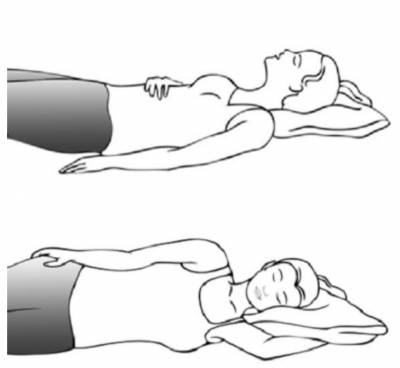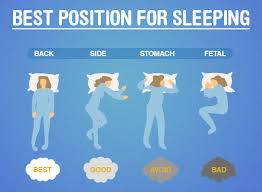The Best Sleeping Positions To Say Goodnight To Neck pain


“Put Neck Pain To rest and get a goodnight sleep”
Awareness of sleeping positions and proper pillows can minimize pain
As with so many things, when it comes to neck pain, an ounce of prevention may be worth a pound of cure. It’s true that some causes of neck pain, such as age-related wear and tear, are not under your control. On the other hand, there are many things you can do to minimize your risk. One place to start is to look at how you sleep and what effect this may have on neck pain.
What is the best sleeping position for neck pain?
Two sleeping positions are easiest on the neck: on your side or on your back. If you sleep on your back, choose a rounded pillow to support the natural curve of your neck, with a flatter pillow cushioning your head. This can be achieved by tucking a small neck roll into the pillowcase of a flatter, softer pillow, or by using a special pillow that has a built-in neck support with an indentation for the head to rest in. Here are some additional tips for side- and back-sleepers:
- Try using a feather pillow, which easily conforms to the shape of the neck. Feather pillows will collapse over time, however, and should be replaced every year or so.
- Another option is a traditionally shaped pillow with “memory foam” that conforms to the contour of your head and neck. Some cervical pillows are also made with memory foam. Manufacturers of memory-foam pillows claim they help foster proper spinal alignment.
- Avoid using too high or stiff a pillow, which keeps the neck flexed overnight and can result in morning pain and stiffness.
- If you sleep on your side, keep your spine straight by using a pillow that is higher under your neck than your head.
- When you are riding in a plane, train, or car, or even just reclining to watch TV, a horseshoe-shaped pillow can support your neck and prevent your head from dropping to one side if you doze. If the pillow is too large behind the neck, however, it will force your head forward.
Sleeping on your stomach is tough on your spine, because the back is arched and your neck is turned to the side. Preferred sleeping positions are often set early in life and can be tough to change, not to mention that we don’t often wake up in the same position in which we fell asleep. Still, it’s worth trying to start the night sleeping on your back or side in a well-supported, healthy position.
Beyond sleep position
Research suggests that not just sleep position, but sleep itself, can play a role in musculoskeletal pain, including neck and shoulder pain. In one study, researchers compared musculoskeletal pain in 4,140 healthy men and women with and without sleeping problems. Sleeping problems included difficulty falling asleep, trouble staying asleep, waking early in the mornings, and non-restorative sleep. They found that people who reported moderate to severe problems in at least three of these four categories were significantly more likely to develop chronic musculoskeletal pain after one year than those who reported little or no problem with sleep. One possible explanation is that sleep disturbances disrupt the muscle relaxation and healing that normally occur during sleep. Additionally, it is well established that pain can disrupt sleep, contributing to a vicious cycle of pain disrupting sleep, and sleep problems contributing to pain.
ABOUT MICHIGAN SPORTS & SPINE CENTER:
We’re innovative leaders utilizing cutting-edge technologies such as musculoskeletal ultrasounds, PRP, stem cell treatment, and other innovative procedures. Michigan Sports & Spine Center is committed to resolving your pain, not simply masking it. We treat the whole body, not just the injury, and perform preventative treatment so your injury doesn’t come back. Our studies prove that Michigan Sports & Spine Center has patient success rates much higher than the national average. We treat everyone from high-profile athletes to your neighbor next door. Our primary focus is getting our patients back into the game of life!
